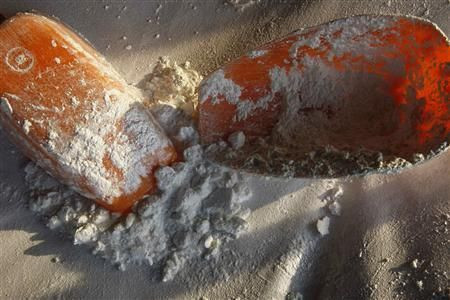North Korea's Hidden Crystal Meth Problem: Citizens Struggle To Kick The Habit

Crystal methamphetamine has become the centerpiece for a lot of media coverage recently thanks to the hit AMC television drama "Breaking Bad." But in one reclusive pocket of the world, namely, North Korea, crystal meth drug use is familiar not because of a TV show that no one has seen due to a ban on external media but because of an epidemic that is consuming its citizens.
According to a report by the Wall Street Journal, North Korea is currently facing what the Spring 2013 edition of the North Korea Review journal is calling a “drug epidemic” caused by rampant meth use among its citizens. The report spotlights an unnamed 25-year-old North Korean man who fled the reclusive nation in the winter of 2009 by escaping via the frozen Tumen River, which borders China. He said the only thing that kept his mind clear during the dangerous escape, which meant evading armed guards on both the North Korean and Chinese sides, was crystal meth. “I inhaled about ten hits before I went to the river,” the man, who now resides in Seoul, South Korea, told the newspaper. “I felt really focused; all I could think was, go, go, go. I didn’t sleep for two days after that.”
But this wasn’t the first time he had used the drug. He said that before defecting, he had been using the drug, known locally as “bingdu” or “ice,” for three years on and off. Originally hailing from Hamhung, South Hamgyung Province, he said the drug was readily available, with dealers pushing the drug on the streets. “Doing ice was a social thing; it was a lot of fun,” he said. The man said that he and his friends would take hits together before eating and let the drug keep them up all night.
The North Korea Review published an article called “A New Face of North Korean Drug Use: Upsurge in Methamphetamine Abuse Across the Northern Areas of North Korea,” which describes the rapid development of the country’s underground drug market, with meth production shifting from being manufactured for export in government-sanctioned factories for being made in people’s homes and sold on local streets. When poppy fields became sparse after the peak of opium use in China, meth was initially produced as a replacement.
While statistics on use of the drug in North Korea are sparse and unverified, like much of the news to come out of the country, Kim Seok-hyang, a co-author of the study, said “almost every adult in that area [of North Korea] has experienced using ice and not just once. I estimate that at least 40 to 50 percent are seriously addicted to the drug.”
© Copyright IBTimes 2025. All rights reserved.




















